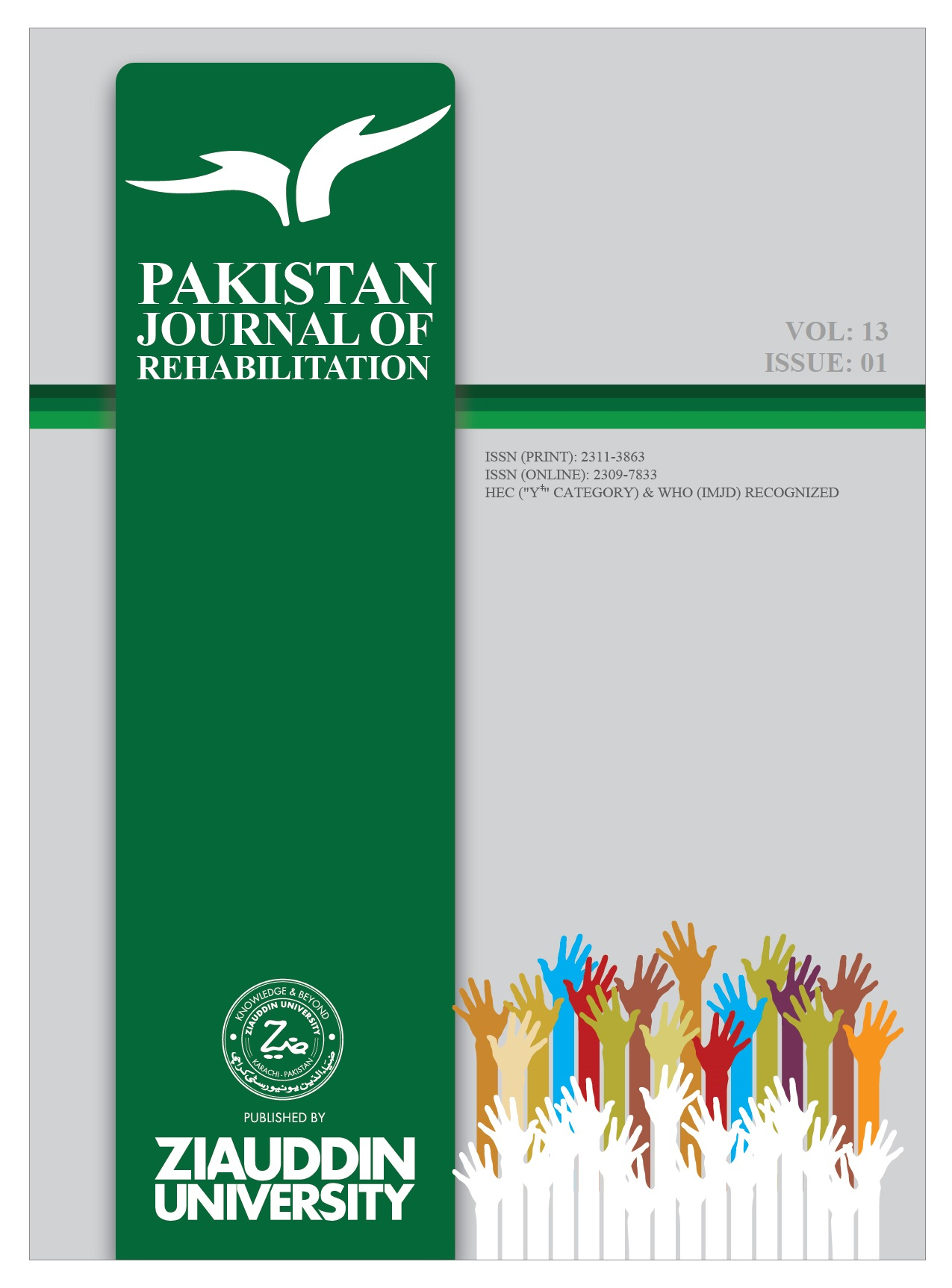12
1
2023
1707976069400_3605
3-4
http://ojs.zu.edu.pk/ojs/index.php/pjr/article/download/1878/721
Received: Mon, April 25, 2022 Accepted: Tues, Nov 22, 2022 Published: Tues, Jan 03, 2023
DOI: 10.36283/pjr.zu.12.1/002
LETTER TO EDITOR PAKISTAN JOURNAL OF REHABILITATION
VOLUME 12 (ISSUE 1), 2023 Page no.
MIND THE GAP DISCRIMINATION AND MANAGEMENT CHALLENGES AMONG FEMALE PHYSICAL THERAPISTS
Roohi Abbasi, Salwa Attaii, Hina Guliii, Sidra Khaniv, Khizra Hamidv
Gender matters and has an impact, and it is intended to encourage readers to think about this important issue in clinical practice, education, research, and a wider context of public health1. Due to the dearth of gender theoretical knowledge that has been discovered within the field of physiotherapy, there are still many difficulties that women must overcome in today's world of gender equality and feminism for women's rights2. Historically, women are predominated in the physiotherapy profession, although this has gradually changed throughout the years3. According to Chartered Society of Physiotherapists (CSP) data for both practicing and non-practicing physiotherapists, the gender split changed from 76% female to 24% male to 74% female to 26% male between 2017 and 2020. Although women make up more than 50% of the physiotherapy workforce globally, they make up fewer than 50% of executive positions in national physiotherapy associations3.
Evidence of gender discrimination in health care industry revealed a significant issue known as the “leaking pipeline,” in which women is unfairly awarded top positions or higher ranks in the health industry since more men than women currently own practices, hold more managerial or administrative roles, hold more teaching appointments, and have higher earnings4. The inadequate and stressful work environment that significantly contributes to the burnout phenomena among female professionals is another difficulty faced by females5. Nearly 46% of female medical professionals were unsatisfied with their employment positions as a result of the unfavorable influence imposed by their family responsibilities, which is a result of the family interfering with the work pledge. The anticipation of professional patterns linked to family commitments may also be related to gender disparities in income expectations6.
Regardless of expected practice location or position, men expected higher incomes due to a greater expectation of full-time continuous employment, whereas women expected more part-time employment and more time off for family obligations7. Although physical therapy is a female-dominated field, women matriculating into professional physical therapy appear to have lower career goals than men. The delivery of physiotherapy services across all sectors should be taken into account by the physiotherapy profession in light of this shift in gender7.
The Ziauddin University is on the list of I4OA, I4OC, and JISC.
This is an open-access article distributed under the terms of the Creative Commons Attribution License (CC BY 4.0).
Conflict of Interest: The author (s) have no conflict of interest regarding any of the activity perform by PJR.
As a profession, we increasingly require a sufficient female workforce with the range and depth of knowledge necessary to treat patients with a variety of chronic illnesses in the public and private sectors. Therefore, fostering diversity and gender equality can favor not only an effective patient care and satisfaction but also contentment of health care provider particularly females. A promising trend toward gender studies in the discipline of physiotherapy can be recognized, and it should be promoted to expedite the growth of knowledge in the field5,7.
References
Stenberg G, Fjellman-Wiklund A, Strömbäck M, Eskilsson T, From C, Enberg B, Wiklund M. Gender matters in physiotherapy. Physiotherapy Theory and Practice. 2021 Sep 3:1-4.
ALobaid AM, Gosling CM, Khasawneh E, McKenna L, Williams B. Challenges faced by female healthcare professionals in the workforce: a scoping review. Journal of Multidisciplinary Healthcare. 2020;13:681.
The gender balance in physiotherapy [Internet]. The Chartered Society of Physiotherapy. 2021. Available from: https://www.csp.org.uk/frontline/article/gender-balance-physiotherapy.
Arrizabalaga P, Abellana R, Vinas O, Merino A, Ascaso C. Gender inequalities in the medical profession: are there still barriers to women physicians in the 21st century? Gaceta Sanitaria. 2014;28:363-8.
Desai T, Ali S, Fang X, Thompson W, Jawa P, Vachharajani T. Equal work for unequal pay: the gender reimbursement gap for healthcare providers in the United States. Postgraduate Medical Journal. 2016;92(1092):571-5.
Azeem SM, Akhtar N. The influence of work life balance and job satisfaction on organizational commitment of healthcare employees. International journal of human resource studies. 2014;4(2):18.
Marie A Johanson. Sex Differences in Career Expectations of Physical Therapist Students.Physical Therapy. 2007;87(9):1199–12.
i Assistant Professor, Lahore College of Physical Therapy, LMDC, Lahore, Pakistan (0000-0003-2121-8335)
ii Lecturer, Physical Therapy Department LM&DC, Lahore, Pakistan (0000-0001-9945-6830)
iii Assistant Professor, Riphah International University, Lahore, Pakistan (0000-0001-6161-8099)
iv Senior Physical Therapist, Ittefaq Hospital, Lahore, Paksitan (0000-0002-8349-854X)
v Demonstrator, Lahore College of Physical Therapy, LMDC, Lahore, Pakistan (0000-0003-3053-3871)
ISSN PRINT: 2311-3863 3 ISSN ONLINE: 2309-7833
| Id | Article Title | Authors | Vol Info | Year |
| Id | Article Title | Authors | Vol Info | Year |

